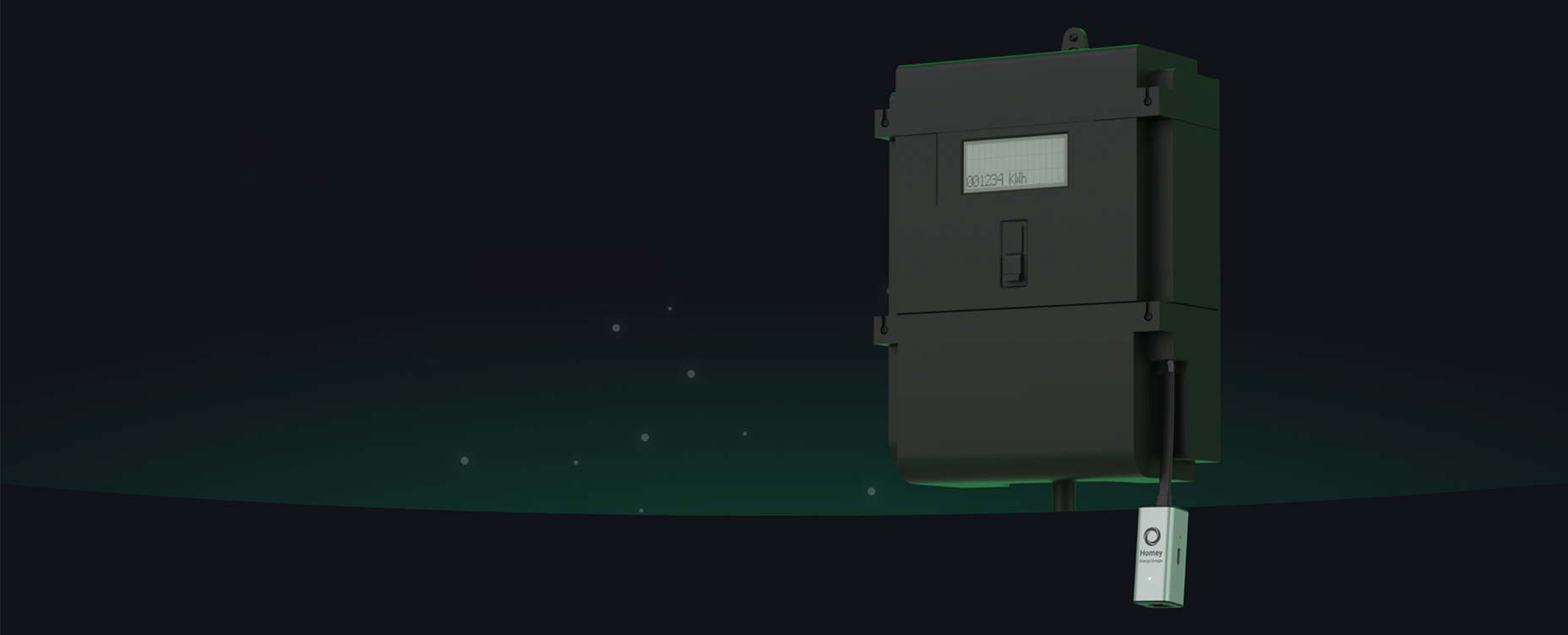
Smart Energy Monitoring with Homey: A Guide to Smart Meters Around the World
Energy monitoring is at the heart of modern sustainability efforts, shaping how households and businesses consume electricity. Across the globe, different regions rely on various energy metering solutions tailored to their infrastructure, policies, and energy needs. But how do these differ? What types of energy meters are out there and where are they typically used? How can you utilize smart meters to cut energy costs with Homey?
Discover what hardware is used around the world to monitor energy usage. Learn how smart energy readers — like the Homey Energy Dongle — can help you identify large consumers and optimize your household's energy use.
Smart Energy Monitoring at a Glance
- Track real-time energy consumption
- Monitor electricity, gas, and water usage
- Discover smart energy meters used across the world
- Learn about alternative energy monitoring solutions
- Enable automation through smart home platforms — like Homey
What are Smart Energy Meters?
Smart energy meters are devices that track energy usage in real-time. Through platforms like Homey, they help users identify wasteful energy habits, lower energy costs and minimize their environmental impact.
Types of Smart Energy Meters
Smart energy meters come in various shapes and forms, differing in how they gather data, the hardware they use and the type of connection they require. With diverse utility meter types used worldwide, these devices are designed to meet specific regional standards and needs. Below are the main types of smart energy meters:
P1 Readers
P1 readers connect directly to the P1 port available on modern smart meters. These ports are common in many European countries and provide direct access to real-time energy, gas and in some cases even water data. P1 dongles like the Homey Energy Dongle are plug-and-play by design, making them a popular choice for many users.
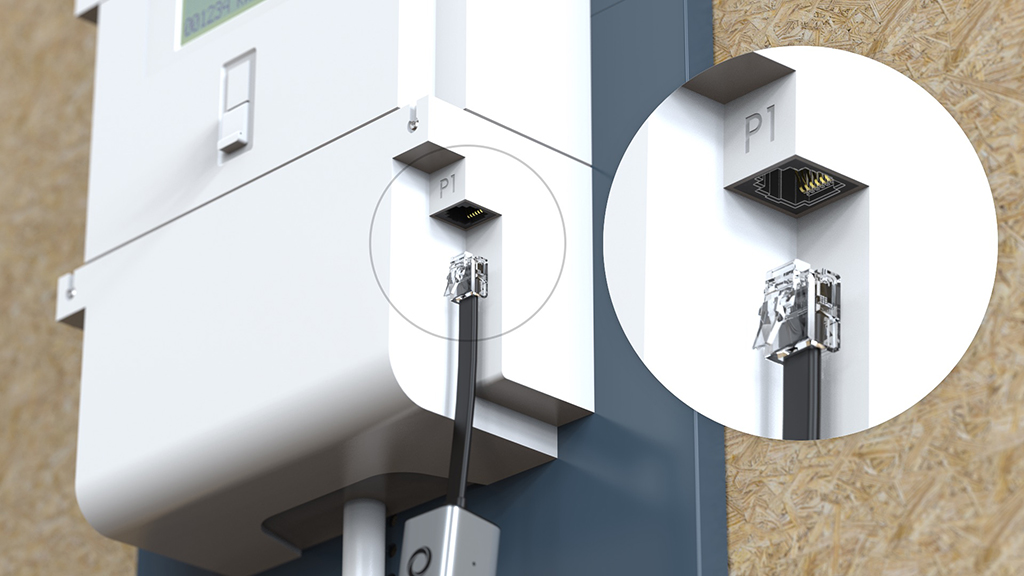
The DSMR (Dutch Smart Meter Requirements) standard defines the data format and transmission rates for P1-compatible Smart Meters. Although it originated in The Netherlands, it is widely adopted by many European countries and includes several levels:
- DSMR 4.x and earlier: Basic functionality with limited data updates. Provides 5V at 100 mA, insufficient to power P1-connected readers.
- DSMR 5.x: Real-time updates with renewable energy systems support. Provides 5V at 250 mA, enough to power P1 readers including the Homey Energy Dongle.
- DSMR 6.x: Real-time updates with smart grid integration and advanced encryption support. Provides 5V at 250 mA, enough to power P1 readers including the Homey Energy Dongle.
Countries using P1 Readers:
- 🇳🇱 The Netherlands
- 🇧🇪 Belgium
- 🇱🇺 Luxembourg
- 🇩🇰 Denmark
- 🇭🇺 Hungary
- 🇸🇪 Sweden
- 🇫🇮 Finland
- 🇦🇹 Austria
- 🇱🇹 Lithuania
- 🇨🇭 Switzerland
The P1 port on your utility meter is easy to recognize, typically labeled as "DSMR" or "ESMR." It uses an RJ12 connector, commonly known as a telephone jack. If the port is marked "RS485," "Modbus," or "M-bus," it serves a different purpose and is not compatible with the P1 standard.
Learn more about the Homey Energy Dongle compatibility.
HAN Readers
HAN (Home Area Network) readers communicate directly with the HAN ports of smart meters. The HAN port is widely used in Nordic countries, where energy monitoring technology is widely adopted. Just like P1 dongles, HAN readers allow seamless data transfer between the utility meter and a smart home system.
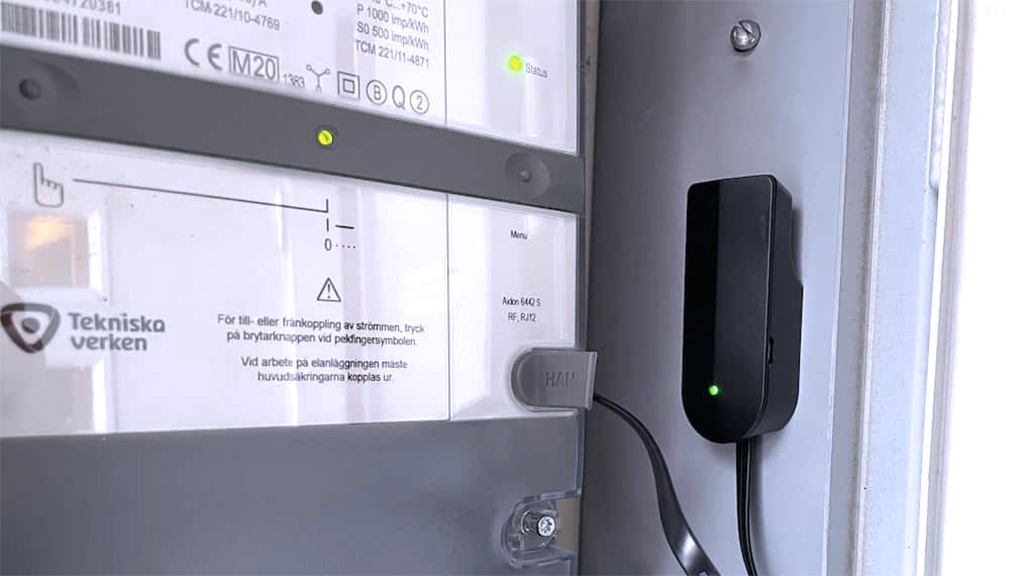
Utility companies usually need to enable the HAN port and give homeowners access to their consumption data. It is a low-power, secure interface that supports standardized data protocols, ensuring compatibility with certified HAN readers. These readers can pull real-time electricity, gas, or water usage data directly from the meter.
Countries using HAN Readers:
- 🇳🇴 Norway
- 🇸🇪 Sweden
- 🇩🇰 Denmark
- 🇫🇮 Finland
The HAN port on your utility meter is typically labeled as "HAN," but it may also be labeled as "AMI" (Advanced Metering Infrastructure). It uses an RJ45 connector, commonly known as an Ethernet jack. If the port is labelled as "RS485," "Modbus," "M-bus," "CAN," or "PLC" it serves a different purpose and it's not a HAN port.
Optical (Pulse) Readers
Optical readers use photoelectric sensors to detect light pulses or blinks emitted by utility meters. These pulses, generated by a small LED on the meter, represent energy consumption in units like kilowatt-hours (kWh). Optical readers then process this data and convert it into actionable insights for users to view and analyze with smart tools like Homey Energy.
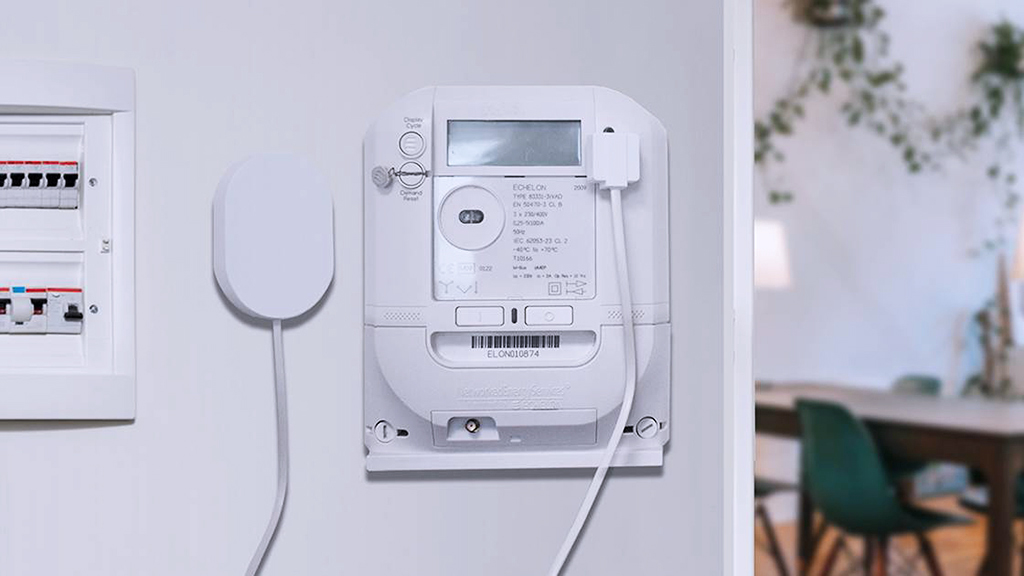
These readers work well with older meters that lack digital communication ports. Some optical readers detect visible light pulses, while others capture infrared signals from meters with IR LEDs. Optical readers are common in North America, Europe, parts of Asia, and the UK, where traditional utility meters with LED indicators are still prevalent.
Countries and regions using Optical Pulse Readers:
- 🇺🇸 United States
- 🇨🇦 Canada
- 🇬🇧 United Kingdom
- 🇦🇺 Australia
- 🇯🇵 Japan
- 🇪🇺 Most European Countries
Clamp Readers
Clamp readers clip onto electrical wires and measure current flow by detecting the magnetic field created by the passing current. As they don’t need a direct connection to the meter, clamp readers are ideal for use when access to the utility meter is limited. As a result, these devices estimate energy usage and can provide more accurate results when paired with voltage measurements.

Clamp readers are used worldwide, especially in areas with older grid infrastructure. Their portability and easy installation make them popular for residential and small commercial applications. Users also favor them in rental properties or temporary setups, as they are non-invasive and don’t require permanent changes to the electrical system.
Alternative Energy Monitoring Solutions
Some utility providers offer ways to monitor energy usage without P1, HAN, optical, or clamp readers. For example, SMETS (Smart Metering Equipment Technical Specifications) meters in the UK use a dedicated government-managed network for two-way communication, enabling real-time updates and remote adjustments. These meters integrate seamlessly into the UK’s smart energy grid.
Further, PLC (Power Line Communication) meters, commonly used in Italy, transmit energy data over existing power lines, removing the need for separate communication networks. While providers primarily use this data for billing, some share it with consumers to support energy management.
GSM/GPRS meters are common in remote locations where wired infrastructure is unavailable. These meters use mobile networks to send energy usage data to utility companies. However, consumers rely on their providers to share this data for energy-saving purposes.
Integrating Smart Energy Meters with Homey
The ultimate goal of using a smart meter is to save energy. For this purpose, you need a capable tool to analyze and optimize your home's energy usage. This is where our updated Homey Energy feature comes into play.
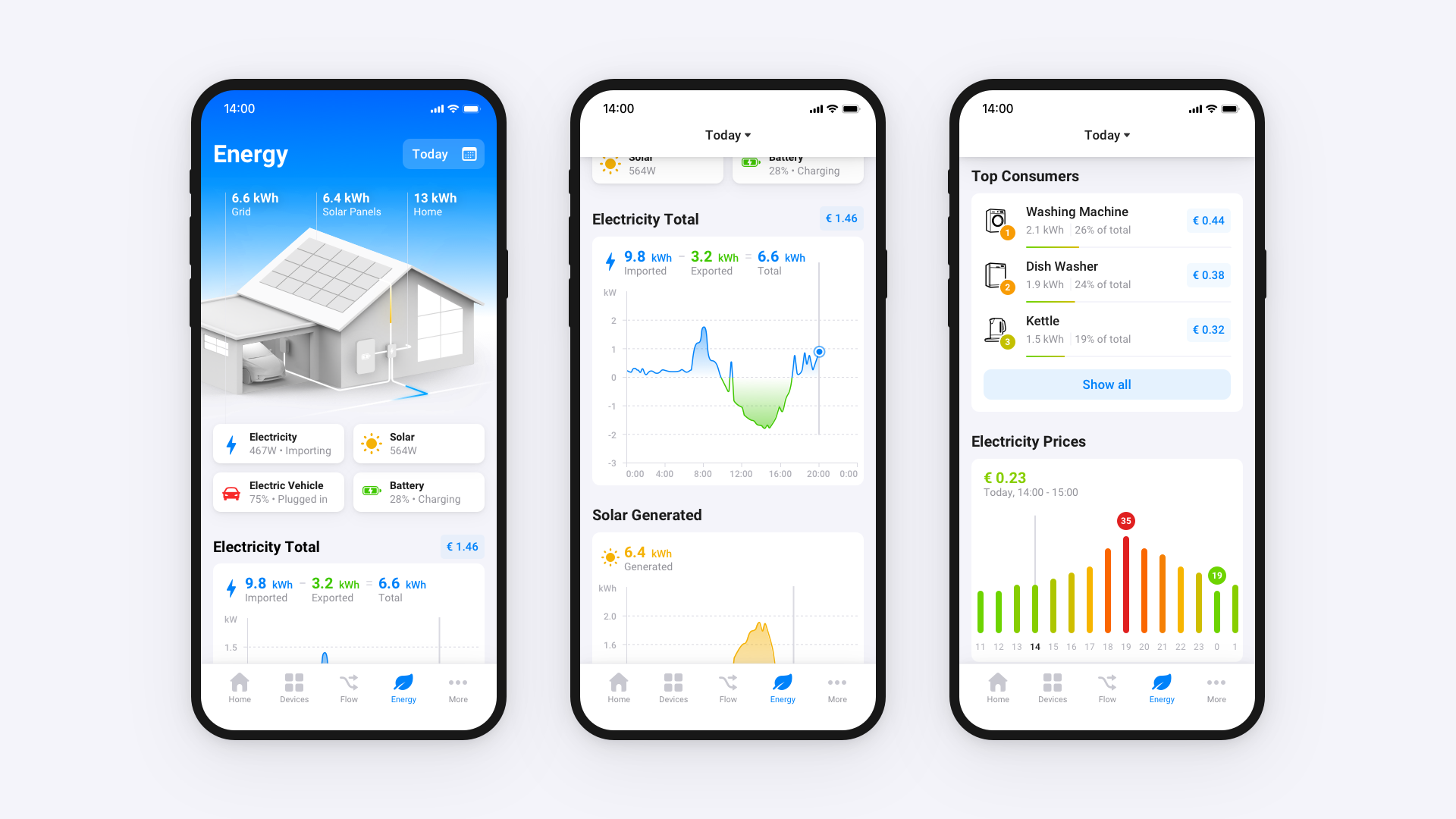
Homey Energy gives you real-time insights into your home's energy consumption, helping you see which devices use the most power. This data allows you to identify energy-hungry appliances and take action to reduce their usage.
You can integrate your solar panels and home battery system to gain a complete overview of your PV setup. When your system produces excess energy, Homey can automatically activate devices like heat pumps or boilers to maximize the use of your self-produced renewable energy.
If you own an electric vehicle, Homey provides insights into the battery level and charging status while keeping you notified about the energy draw. By adding your EV charger to Homey Energy, you can further optimize consumption and improve efficiency.
Homey Energy works best with our Homey Energy Dongle. Our energy feature also supports a wide range of P1, HAN, Optical, and Clamp meters, including the popular Frient Electricity Meter Interface 2 and all variants of the Tibber Pulse meter. Support for additional utility meters is constantly expanding, check out the full list of supported meters.
Try Homey with our new Energy feature today, for free!






